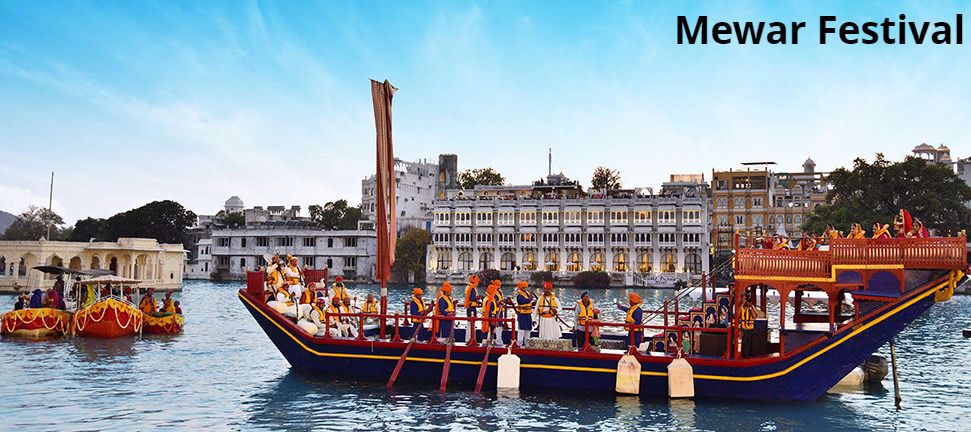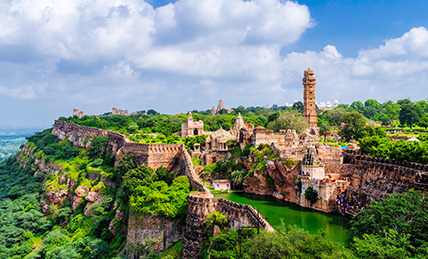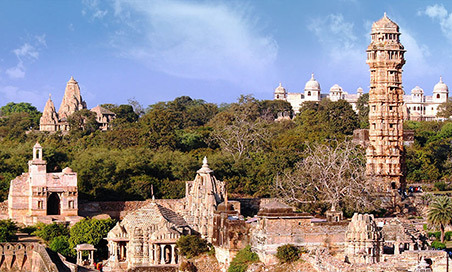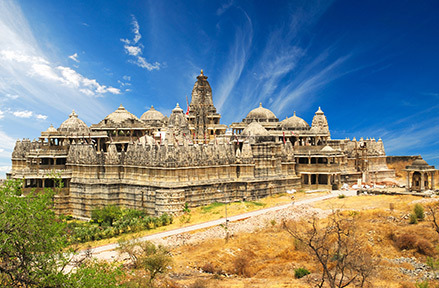MEWAR: One of the oldest ruling dynasties of India
|
Read. Imagine. Travel.
Namaste! As informed you in our last edition, in the fight against Covid-19, India on 03rd January 2022 launched vaccination drive for children in the age group of 15-18 years and it is going on smoothly. With 1.5 billion vaccination doses already administered, so far around 35% children between 15-18 years received the first dose and over 65 per cent of the adult population received both doses of vaccination in India. From 10 January 2022, India also started precautionary third dose (booster dose) of vaccination for the health and frontline workers and senior citizens with comorbidities.
Thank you for your support for TravNama which allows us to showcase the unique experiences, concepts and destinations that are part of the Indian Subcontinent. It is an amazing feeling for us to share our heritage with you. In this edition, we invite you on an interesting journey of ‘MEWAR: One of the oldest ruling dynasties of India’.

Mewar is best represented by Rajputs, who have an illustrious history of courage, sacrifices, triumphs, traditions, art and culture. The dynasty traces its lineage to the Ghulia dynasty, which used the title ‘Rawal’ (king) and ruled until Rawal Ratan Singh died with the seizure of Chittorgarh in the hands of Allaudin Khilji. Then Hammir Singh, a scion of Ghulia's cadet branch, defeated the Tughlaq dynasty (a successor of the Khilji dynasty) and regained Mewar's control. He re established the dynasty naming it ‘Sisodia clan’. Sisodia Rajputs, who reigned between 1326 to 1884 used the title Maharana and took Mewar to new heights. Sisodias’ contributed a lot in the field of arts and architecture. Some of the names from the clan which shine till today for their unmatched courage are Maharana Hammir Singh (1326-1364), Rana Kumbha (1433-1468), Rana Sanga (1508-1527) and Maharana Pratap Singh (1572-1597).
Interesting Fact: They were such a great warriors that some texts even say that had there been no weak ruler between Maharana Rana Sanga I and Maharana Pratap Singh I, Mewar would have never seen an invasion of Mughals and would have even ruled the Delhi sultanate.
LET US UNFOLD THE PAGES FROM HISTORY TO KNOW THEIR JOURNEY:
CHITTORGARH

Once the ruling capital of Mewar, Chittorgarh is home to India’s largest fort, ‘Chittorgarh Fort’. It is believed to have been built in the Mauryan period in 7th century AD. But today it is remembered mostly for the period of Ghulia and the Sisodia clan of Rajput rulers, who added many structures to the existing complex. One of the largest forts of Asia, it has seen many conspiracies, deceits, blood bathed stories of greed and sacrifice, spirituality, and several seizes. It houses palaces, victory towers, temples and human settlements. The majestic fort has seven gates and is a UNESCO world heritage site.
One of the largest bloodsheds the fort had seen was during the reign of Rawal Ratan Singh (also called as Rawal Ratnasimha) of the Ghulia dynasty when Delhi sultanate, Alauddin Khilji's lust for King's beautiful wife Padmavati made him attack the fort.
Despite the massive army of the invaders, Rawal Ratnasimha gave him a tough fight, as it took about eight months for the Khilji's army to seize this formidable fort and that too only after the kings' martyr. Contrary to the expectation of Alauddin Khilji, Queen Padmavati, along with her approximately 16000 maids committed Jauhar (mass self-immolation) to protect their honour, inside the fort. The remaining Rajputs within the fort fought to the death, making Khilji's victory pyrrhic with an empty fort. The conquest is believed to have killed as many as 30000 Hindu soldiers by Khilji's army.

After many years of seize, Maharana Hammir Singh regained the control of the fort and re established Mewar. The glorious days of the fort returned and many interesting monuments were added. One can retrace the history with a visit to the ruins of Rana Kumbha Palace, Padmavati's three-storeyed Palace, Kirti Stambh (Tower of Fame), a 12th century seven-storeyed, 22m high tower built by a Jain merchant, Vijay Stambh (Tower of Victory) a nine-storeyed 40m high architectural marvel built in 1440 AD and numerous other palaces and temples.
The fort had as many as 84 water bodies, including ponds, wells and step wells, to beat the water scarcity and quench the thirst of as many as 50000 people for four consecutive years. Around 22 of the water bodies are still surviving.
|
KUMBHALGARH
Built by Rana Kumbha (the fourth successor after Maharana Hammir Singh) in the 15th century AD, Kumbhalgarh is the second most important citadel after Chittorgarh in the Mewar region. Rana Kumbha had been a celebrated ruler of the Mewar dynasty, who expanded his territory up to present-day Madhya Pradesh (in the central part of India). His territory had as many as 80 forts and among them 32 were built by him. The Kumbhalgarh fort was the most elaborate and largest of all.
 It still remains one of the strongest forts of India and bears testimony to the war tactics and the architectural finesse of the Mewar rulers. It was majorly used to take refuge by its rulers, as Chittorgarh was invaded frequently because of its strategic location on a trade route.
It still remains one of the strongest forts of India and bears testimony to the war tactics and the architectural finesse of the Mewar rulers. It was majorly used to take refuge by its rulers, as Chittorgarh was invaded frequently because of its strategic location on a trade route.
Kumbhalgarh fort, along with 360 temples, is surrounded by a 36 km long wall, which is one of the largest in the world bearing a striking resemblance to the Great Wall of China.
The fort is honored for being a refuge to minor Uday Singh II and the birthplace of Maharana Pratap Singh, who made his own niche and was the most courageous and celebrated warrior of Mewar dynasty. A thick forest cover around the fort is converted into a wildlife reserve. It is home to many wildlife species and offers beautiful walks to explore flora, fauna and tribes, who live over there. Watch a short video showcasing the majestic Kumbhalgarh Fort.
INSIDER TIP: According to folklore, Maharana Kumbha used to light up massive lamps to provide light to the farmers working late at night. A similar kind of experience can be retraced with the sound and light show, which is a daily activity at the fort.
RANAKPUR
While Rana Kumbha's patronage to Jainism is evident through numerous Jain temples allowed by him to flourish inside his kingdom, the most prominent among them is the Jain Temple of Ranakpur. The legend has it that Dharanashah, a minister of Rana Kumbha, had a divine vision and wanted to build the temple. Rana Kumbha helped him with the land and also suggested building a township around the temple, which was named Ranapur after him and later popularized as Ranakpur.

A confluence of devotion and art, the Jain temples here are known for intricate works and infinite pillars. One of the largest Jain temple complexes the majestic structure with four artistic entrances took around 50 years to be completed by 2785 workers.
It is very strategically located on the travel routes between Udaipur (90 kms), Kumbhalgarh (33 kms), and Jodhpur (155 kms). Watch a video on Ranakpur Jain Temples - A carved wonder.
Interesting fact: None of the 1444 pillars obstruct the view of the main deity from any corner of the temple. The carvings on each pillar are unique and not identical.
UDAIPUR
The legend has it that Uday Singh II was guided by a hermit, who suggested the location for the palace on the banks of Lake Pichola (in present day Udaipur) to remain protected. However, he fortified the city with a 6 km long wall having entrances through 7 gates, making it less vulnerable due to Aravali ranges, forests, and lakes surrounding it.

Coincidentally, true to hermit's words, the city remained protected from the invaders. Adding to its beauty, seven interconnected lakes surround the city. For its lake system, Udaipur is also known as the city of Lakes and sometimes dubbed as the ‘Venice of the east’.
The most notable structures in Udaipur include the City Palace built along the banks of Lake Pichola, Jagdish Temple an architectural marvel with carved pillars, graceful ceilings and painted walls, Sahelion ki Badi, Jag Mandir etc.
A hidden treasure Sajjan Garh Palace, known as the Monsoon Palace, is also worth exploring either by bicycles or through a scenic drive. The palace was supposed to act as an astronomical center to keep track of monsoon clouds and thus got the name Monsoon Palace.

The plan had to be shelved due to the premature death of its builder Maharana Sajjan Singh. Situated just outside Udaipur, the palace was built on a hilltop and offers spectacular views of the city and the surroundings.
The bravest in the lineage, Maharana Pratap Singh I (son of Uday Singh II) regained control of most of the Mewar lost by his ancestors except for Chittorgarh. Despite many efforts by the Mughal Emperor Akbar, he never surrendered and for that reason he is also called as the first freedom fighter of India. His horse named ‘Chetak’ was as brave as Maharana Pratap Singh. As per a legend, Chetak horse escaped the Maharana safely out of Haldighati battle despite being heavily wounded and eventually dying after taking him to safety. Watch a glimpse of the Mewar festival that takes place in Udaipur in March or April every year.
This is just about one clan or dynasty. India has had a very extensive history which has witnessed the rise and fall of various dynasties. The incredible land has so many stories waiting to be explored. Come and experience these historic trails with us! We, at Indo Asia Tours, are all about the handcrafted tours, memories, and moments you take out of your trip, and believe us, this escapade will be a life-changing one!
|
Virtual Destination Training Program
|
 We can conduct a virtual destination awareness training program for your team or yourself or a virtual tour for your clients. Let us know the destination of your interest along with your convenient date / time and we will be happy to set up a program for you.
We can conduct a virtual destination awareness training program for your team or yourself or a virtual tour for your clients. Let us know the destination of your interest along with your convenient date / time and we will be happy to set up a program for you.
Send Request
|
Please feel free to write back to us at marketing@indoasiatours.com to share our thoughts on customized journeys covering the Indian subcontinent or take time to visit our website https://www.indoasia-tours.com. Be sure we will prepare the best program to make a memorable trip for your esteemed clients!
|
|


 Once the ruling capital of Mewar, Chittorgarh is home to India’s largest fort, ‘Chittorgarh Fort’. It is believed to have been built in the Mauryan period in 7th century AD. But today it is remembered mostly for the period of Ghulia and the Sisodia clan of Rajput rulers, who added many structures to the existing complex. One of the largest forts of Asia, it has seen many conspiracies, deceits, blood bathed stories of greed and sacrifice, spirituality, and several seizes. It houses palaces, victory towers, temples and human settlements. The majestic fort has seven gates and is a UNESCO world heritage site.
Once the ruling capital of Mewar, Chittorgarh is home to India’s largest fort, ‘Chittorgarh Fort’. It is believed to have been built in the Mauryan period in 7th century AD. But today it is remembered mostly for the period of Ghulia and the Sisodia clan of Rajput rulers, who added many structures to the existing complex. One of the largest forts of Asia, it has seen many conspiracies, deceits, blood bathed stories of greed and sacrifice, spirituality, and several seizes. It houses palaces, victory towers, temples and human settlements. The majestic fort has seven gates and is a UNESCO world heritage site.
 After many years of seize, Maharana Hammir Singh regained the control of the fort and re established Mewar. The glorious days of the fort returned and many interesting monuments were added. One can retrace the history with a visit to the ruins of Rana Kumbha Palace, Padmavati's three-storeyed Palace, Kirti Stambh (Tower of Fame), a 12th century seven-storeyed, 22m high tower built by a Jain merchant, Vijay Stambh (Tower of Victory) a nine-storeyed 40m high architectural marvel built in 1440 AD and numerous other palaces and temples.
After many years of seize, Maharana Hammir Singh regained the control of the fort and re established Mewar. The glorious days of the fort returned and many interesting monuments were added. One can retrace the history with a visit to the ruins of Rana Kumbha Palace, Padmavati's three-storeyed Palace, Kirti Stambh (Tower of Fame), a 12th century seven-storeyed, 22m high tower built by a Jain merchant, Vijay Stambh (Tower of Victory) a nine-storeyed 40m high architectural marvel built in 1440 AD and numerous other palaces and temples.
 It still remains one of the strongest forts of India and bears testimony to the war tactics and the architectural finesse of the Mewar rulers. It was majorly used to take refuge by its rulers, as Chittorgarh was invaded frequently because of its strategic location on a trade route.
It still remains one of the strongest forts of India and bears testimony to the war tactics and the architectural finesse of the Mewar rulers. It was majorly used to take refuge by its rulers, as Chittorgarh was invaded frequently because of its strategic location on a trade route.
 A confluence of devotion and art, the Jain temples here are known for intricate works and infinite pillars. One of the largest Jain temple complexes the majestic structure with four artistic entrances took around 50 years to be completed by 2785 workers.
A confluence of devotion and art, the Jain temples here are known for intricate works and infinite pillars. One of the largest Jain temple complexes the majestic structure with four artistic entrances took around 50 years to be completed by 2785 workers.
 Coincidentally, true to hermit's words, the city remained protected from the invaders. Adding to its beauty, seven interconnected lakes surround the city. For its lake system, Udaipur is also known as the city of Lakes and sometimes dubbed as the ‘Venice of the east’.
Coincidentally, true to hermit's words, the city remained protected from the invaders. Adding to its beauty, seven interconnected lakes surround the city. For its lake system, Udaipur is also known as the city of Lakes and sometimes dubbed as the ‘Venice of the east’.
 The plan had to be shelved due to the premature death of its builder Maharana Sajjan Singh. Situated just outside Udaipur, the palace was built on a hilltop and offers spectacular views of the city and the surroundings.
The plan had to be shelved due to the premature death of its builder Maharana Sajjan Singh. Situated just outside Udaipur, the palace was built on a hilltop and offers spectacular views of the city and the surroundings.
 We can conduct a virtual destination awareness training program for your team or yourself or a virtual tour for your clients. Let us know the destination of your interest along with your convenient date / time and we will be happy to set up a program for you.
We can conduct a virtual destination awareness training program for your team or yourself or a virtual tour for your clients. Let us know the destination of your interest along with your convenient date / time and we will be happy to set up a program for you.

